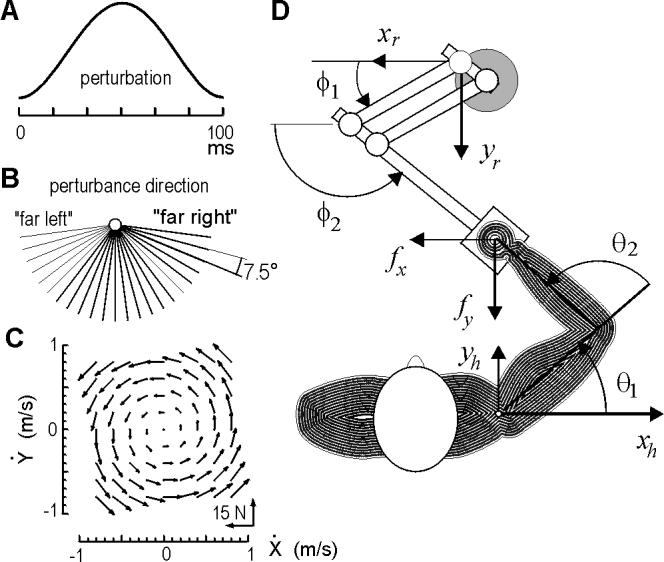Figure 2.

Experimental setup. Subjects made reaching movements of length 10 cm to a target at 90 degrees. (A) On some trials, a perturbation was imposed (probability of 1/6), at 100 ms after movement initiation (detected via a velocity threshold of 0.03 m/s). Perturbations were smooth, rapid functions of 100 ms in length and varying peak magnitude force (7 to 15 N). (B) Direction of the pertubation force vector was selected randomly from among these directions. (C) Subjects made reaching movements in the null field, and then in a force field. The forces in the field depended on hand velocity and are shown here. (D) Top view of the subject and the manipulandum.
